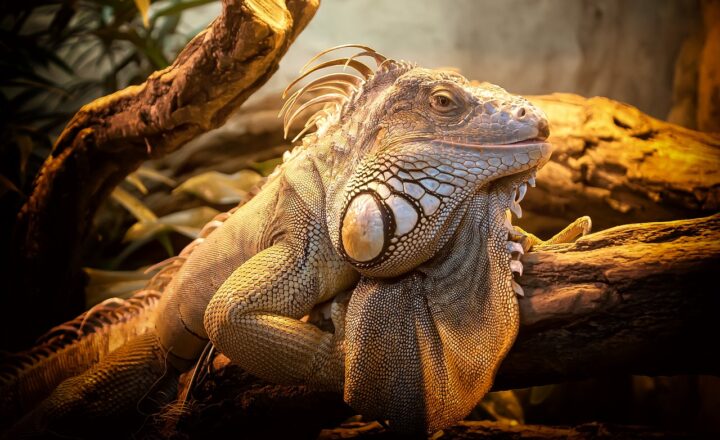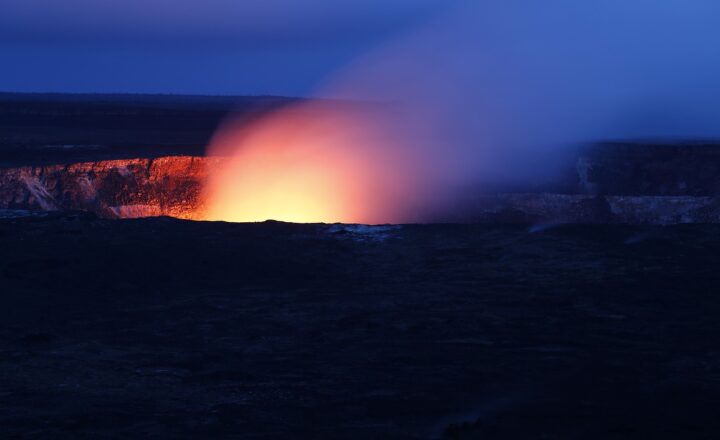Unexplained Creatures Reported by Explorers and Scientists Around the World
November 12, 2024

Throughout history, explorers and scientists have encountered creatures that defy explanation. These sightings, often documented but rarely substantiated, tell tales of strange animals that provoke curiosity, fear, and wonder. From the depths of jungles to the icy expanses of Antarctica, researchers have reported finding beings that seem to belong to the realm of myth rather than reality. In this article, we delve into some of the most captivating reports of unexplained creatures, exploring the evidence, history, and cultural significance of these enigmatic beings.
1. The Mokele-Mbembe: Lake Monster of Congo
Nestled in the heart of the Congo River basin, the legend of the Mokele-Mbembe has captivated both locals and scientists for generations. This creature is often described as a large, dinosaur-like water beast, reminiscent of the long-extinct sauropods. Local folklore paints it as a guardian of the rivers, feared by those who dare to trespass.
Reports of sightings date back to the late 18th century, but it gained global attention in the 1930s when French explorer Pierre-Marie Dybowski documented his encounters. His findings were met with skepticism, fueling a series of expeditions aimed at uncovering the truth. Despite several searches by researchers, definitive evidence remains elusive. Is this creature a mere myth, or does it still roam the remote rivers of Africa?
2. The Chupacabra: Myth or Mystery?
The Chupacabra has become a modern legend, particularly in Latin America and the Southern United States. This creature, whose name translates to “goat-sucker,” is said to prey on livestock, leaving behind drained carcasses. Descriptions vary widely, with some detailing a hairless dog-like creature, while others claim it resembles a reptilian being.
The first reported sightings occurred in Puerto Rico in the mid-1990s, and since then, it has become a symbol of unexplained predators. Some theorists believe the sightings could be a misidentification of wild animals suffering from mange. Despite this, the legend persists, captivating imaginations and inspiring numerous documentaries, books, and playful debates about its existence.
3. The Jersey Devil: Folklore from the Pine Barrens
Originating from the New Jersey Pine Barrens, the Jersey Devil is a creature reportedly born to a local resident, Mother Leeds, in the 1700s. According to legend, the baby transformed into a winged demon, escaping into the woods to terrorize the local population. Eyewitness reports describe a creature with hooves, bat-like wings, and a head resembling that of a goat.
The Jersey Devil has become entrenched in local lore and culture, frequently cited in TV shows, literature, and podcasts. Despite the lack of physical evidence, the deep-rooted stories provoke intrigue and fear, making it an enduring topic of curiosity even today.
4. The Skunk Ape: Florida’s Legendary Cryptid
Much like its more famous cousin, Bigfoot, the Skunk Ape is a cryptid said to inhabit the swamplands of Florida. This creature is often described as having long hair, a foul smell, and a stature between that of a human and a gorilla. The Skunk Ape tends to elude capture, feeding into its legendary status.
In 2000, a family in Florida claimed to have spotted the beast in their backyard, providing grainy video footage of what they described as the creature. Numerous sightings and mysterious footprints have been reported, raising questions regarding its existence. Cryptozoologists and enthusiasts continue to explore the Everglades, hopeful of a significant breakthrough.
5. The Bunyip: Australian Folklore
The Bunyip is an Aboriginal mythical creature believed to reside in swamps, creeks, and billabongs across Australia. Its lore is deeply embedded in indigenous culture, bringing tales of a lumbering monster that emits terrifying sounds at night. Descriptions of the Bunyip vary, ranging from a massive dog-like figure to a creature resembling a giant seal.
Despite being primarily degraded to folklore, sightings and tales drummed up through the years have kept the Bunyip in contemporary discussions around cryptids. Researchers have speculated that it could have roots in real prehistoric animals, sparking an ongoing debate over what lies in the Australian wilderness.
6. The Yowie: Bigfoot’s Aussie Counterpart
Similar to North America’s Bigfoot, the Yowie is reported to be a large, hairy creature lurking in the Australian bush. Descriptions of the Yowie vary greatly, referring to it as a bigfoot-like being or occasionally resembling a massive kangaroo. Witnesses claim the creature is elusive, often vanishing in a cloud of mystery.
Reports of sightings stretch back to ancient Aboriginal stories, but modern accounts date from the 19th century onwards. Despite numerous investigations and amateur documentaries, substantial evidence remains scant, pushing the Yowie into the realm of myth. It continues to captivate the curiosity of cryptozoologists worldwide.
7. The Loch Ness Monster: Scotland’s Aquatic Enigma
No discussion of unexplained creatures would be complete without mentioning the Loch Ness Monster, affectionately dubbed Nessie. The Loch Ness Monster is often characterized as a large aquatic creature, resembling a prehistoric plesiosaur. Sightings of Nessie date back to the 6th century, but the most pivotal encounter was in 1934 when a famous photograph purportedly captured the creature.
The photograph, known as the “Surgeon’s Photograp,” sparked widespread intrigue and prompted numerous expeditions to Loch Ness. However, subsequent investigations have revealed the photograph was likely a hoax, yet that hasn’t stopped thousands from visiting the loch yearly, hoping to catch sight of the legendary creature. Indeed, Nessie remains one of the most famous unexplained phenomena, a symbol of the quest for extraordinary experiences in nature.
Conclusion
The world is filled with mysteries, and the reports of unexplained creatures by explorers and scientists tap into the human fascination with the unknown. While some of these creatures are steeped in folklore, others may be grounded in reality, waiting for science to catch up. The stories of the Mokele-Mbembe, Chupacabra, and other enigmatic beings demonstrate how cultures across the globe grapple with understanding nature’s secrets. Whether these creatures can be discovered or remain woven into the fabric of myth and legend, they highlight humanity’s perpetual curiosity and adventure towards the undiscovered.
Join us on explorer’s journey, exploring the intersection of folklore and science, and remind us that there are still countless mysteries yet to be solved in our world.








